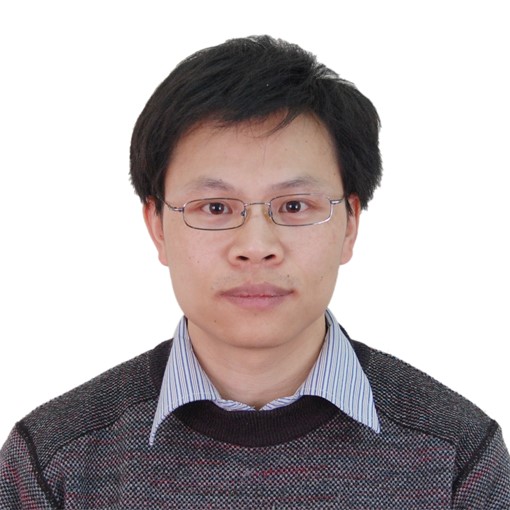|
Name |
Chaojun OUYANG |
|
|
Professional Title |
Professor | |
|
Address |
No. 9, Block 4, Renminnanlu Road, Chengdu, 610041, People’s Republic of China | |
|
|
cjouyang@imde.ac.cn | |
|
Professional Expertise |
Numerical modeling and physical model of geohazards; Dynamic process of landslides and debris flow; Finite difference method, finite volume method and discrete element method; Artificial intelligence in application of geohazards
| |
|
Education 2009: Ph D from Huazhong University of Science and Technology 2005: Bachelor degree from Huazhong University of Science and Technology
| ||
|
Employment Record(including international working experience ) Jan, 2019-present, Professor in Institute of Mountain Hazards and Environment, Chinese Academy of Sciences. Dec, 2012-2019, Associate researcher in Institute of Mountain Hazards and Environment, Chinese Academy of Sciences. April, 2012-Jan, 2014, Visiting scholar in Cascades Volcano Observatory of USGS, USA. Nov, 2009-Nov, 2012, Assistant researcher in Institute of Mountain Hazards and Environment, Chinese Academy of Sciences
|
||
|
Running Projects 1. National Natural Science Foundation of China:Dynamic process of Geohazards (grant No. 42022054), 2021-2023 2. Strategic Priority Research Program of Chinese Academy of Sciences (Grant No. XDA23090303), 2019-2024 3.National Key Research and Development Program of China (Project No. 2017YFC1501000), 2018-2021 4.Youth Innovation Promotion Association of Chinese Academy of Sciences, 2019-2021
|
||
|
Academic Society Activities President of a council of Youth Geoscience Network in Belt and Road Director of earth branch of Youth Innovation Promotion Association Academic Editor of the Innovation which is partial journal of Cell Press Editor of SCI journal Landslides and Journal of Mountain Science
| ||
|
Awards National Science Fund for Excellent Young Scholars Excellent Member of Youth Innovation Promotion Association Gu Dezhen youth science and technology award
| ||
|
Publications [1]Wei K,Ouyang C*, Duan H, Li Y, Chen M, Ma J, An H, Zhou S (2020) Reflections on the catastrophic 2020 Yangtze River basin flooding in Southern China.Innovation1(2): 100038. [2]Iverson, Richard,Ouyang, Chaojun. Entrainment of bed material by Earth-surface mass flows: Review and reformulation of depth-integrated theory,Reviews of geophysics,2015,53 (1): 27-58. [3]Qingsong Xu, Xin Yuan,Chaojun Ouyang*. (2020) Class-aware Domain Adaptation for Semantic Segmentation of Remote Sensing Images. IEEE TRANSACTIONS ON GEOSCIENCE AND REMOTE SENSING (Accepted). [4]Ouyang, Chaojun,An Huicong, Zhou Shu,Wang Zhongwen, Su Pengcheng, Xu, Wang, Dongpo, Cheng Duoxiang, She Jinxing.Insights from the failure and dynamic characteristics of two sequential landslides at Baige village along the JinshaRiver, China,Landslides, 2019, 16(7): 1397-1414. [5]Ouyang Chaojun,Wang Zhongwen,An Huicong,Liu Xinrong, Wang Dongpo*. An example of a hazard and risk assessment for debris flows—A case study of Niwan Gully, Wudu, China,Engineering Geology, 2019, 263. [6]Ouyang Chaojun,Zhou Kaiqi,Xu Qiang,Yin Jianhua,Peng Dalei,Wang Dongpo,Li Weile.Dynamic analysis and numerical modeling of the 2015 catastrophic landslide of the construction waste landfill at Guangming, Shenzhen, China,Landslides,2017,14 (2): 705-718. [7]Ouyang Chaojun,Zhao Wei,Xu Qiang,Peng Dalei,Peng Dalei,Li Weile, Wang Dongpo. Failure Mechanisms and Characteristics of the 2016 Catastrophic Rockslide at Su village, Lishui, China.Landslides, 2018, 15(7): 1391-1400. [8]Ouyang Chaojun,Zhao Wei,An Huicong,Zhou Shu, Wang Dongpo, Xu Qiang,Li Weile, Peng Dalei. Early identification and dynamic processes of ridge-top rockslides: implications from the Su Village landslide in Suichang County, Zhejiang Province, China.Landslides, 2019,1-15. DOI 10.1007/s10346-018-01128-w. [9]Chaojun Ouyang, W Zhao, S He, D Wang, S Zhou, H An, Z Wang, D Cheng.Numerical modeling and dynamic analysis of the 2017 Xinmo landslide in Maoxian County, China.Journal of Mountain Science14 (9), 1701-1711. [10]Ouyang Chaojun,He Siming,Tang Chuan.Numerical analysis of dynamics of debris flow over erodible beds in Wenchuan earthquake-induced area,Engineering Geology,2015.8.26,194:62-72. [11]Ouyang Chaojun,He Siming,Xu Qiang,Luo Yu,Zhang Wencheng.A MacCormack-TVD finite difference method to simulate the mass flow in mountainous terrain with variable computational domain,Computers & Geosciences,2013,52:1-10. [12]Chaojun Ouyang,Siming He,Qiang Xu.MacCormack-TVD finite differencesolution of dam-breakhydraulics over erodible sediment beds,Journal of Hydraulic Engineering,2014,141. [13]Zhou Shu,Ouyang Chaojun*,An Huicong,Jiang Tianhai,Xu Qingsong. Comprehensive study of the Beijing Daanshan rockslide based on real-time videos, field investigations, and numerical modeling,Landslides, 2020, 1217-1231. [14]D Wang, D Wu,Chaojun Ouyang*, S He, X SunSimulation analysis of large-diameter post-installed anchors in concrete.Construction and Building Materials2017,143, 558-565. [15]Wang Dongpo, Liu Mengliang, Zhu Xing, Ma Hongsheng, Cheng Qiang, Zhu Min, Chen Zheng,Ouyang Chaojun*. Failure mechanisms and deformation processes of a high-locality landslide at Tonghua Town, Li County, China, 2017, Landslides, 2020, 17, 165-177. | ||
Chaojun OUYANG
Date:
From:

